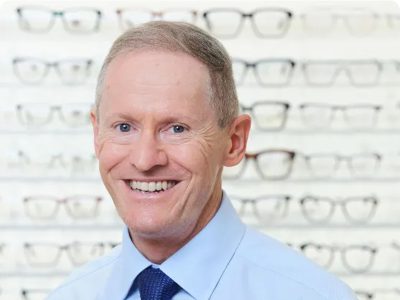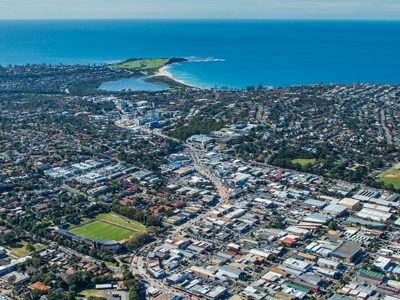The triggers of and treatments for dry eye

Despite the name, dry eye doesn’t just refer to dry eyes. If you’re suffering from uncomfortable, stinging, red, sensitive or watery eyes, dry eye could be a cause. While there are dry eye treatments, it’s useful to know what dry eye is, what triggers it and why it’s important to seek treatment early.
At Ian Donald Optometrist, we value the eye health of every customer, so we can diagnose and speak to you about dry eye treatments and risk factors.
Here’s what you need to know about this common eye condition.
“Dry eye is one of the most common yet overlooked conditions — but with the right treatment, comfort and clarity can be restored.”

Understanding dry eye
Dry eye occurs when your tears aren’t able to provide adequate lubrication for your eyes, either because you don’t produce enough tears or the tears you do produce lack sufficient lubrication. If left untreated, this may lead to inflammation and damage to the eye’s surface. While it may affect a single eye, it more commonly appears in both eyes simultaneously.
Dry eye symptoms include stinging or a scratchy sensation, light sensitivity, redness and a stringy mucus around the eyes. For some, it may feel similar to having an eyelash or speck of dirt in your eye.
Given your eyes are more sensitive with the condition, it may be worse in air conditioning, outside in windy conditions or after extended time in front of a computer.
If you have dry eye, you may feel you have trouble wearing contact lenses and it can be more difficult to see clearly during night-time driving.

What causes it
There are two issues at the centre of dry eye: decreased tear production and increased tear evaporation.
Decreased tear production means you’re unable to produce enough aqueous fluid, and it may arise as a reaction to certain medications or with medical conditions including rheumatoid arthritis, lupus, allergic eye disease, thyroid disorders or vitamin A deficiency.
Increased tear evaporation may occur if the glands on the edge of your eyelids (meibomian glands) become clogged.
This may happen due to issues causing the eyelids to turn inwards or outwards, with eye allergies or again, vitamin A deficiency. It also may arise if you’re not blinking as often as you should, and that may happen when you focus on reading, driving or a screen for extended periods.

Diagnosing dry eye
If you think you have dry eye, we recommend you contact our team for a consultation. While it may seem a minor issue, dry eye may lead to other problems, including eye infections. If left untreated, it also may damage the surface of the cornea, affecting your vision.
While there may be other causes or conditions, it’s best to confirm any issue as soon as possible.
It’s important to remember too that dry eye is more common in females (especially during times of hormonal changes such as pregnancy or menopause), in adults over 50, if you have contact lenses and after refractive surgery.
“Simple lifestyle changes, from blinking more at screens to adding Omega-3s to your diet, can make a big difference in managing dry eye.”

Treatment for dry eye… and prevention
Dry eye treatment usually consists of eye drops, which will make your eyes more comfortable.
In some cases, our optometrists might also suggest prescription lenses such as blue light technology for computer use, or wraparound sunglasses which can help reduce irritation from wind and glare.
It may help to keep your eyes away from direct air streams such as car heating vents or fans.
And it may be possible to reduce symptoms by making some lifestyle changes. We definitely recommend quitting smoking and we may suggest a diet rich in vitamin A and high in omega-3 fatty acids.
At Ian Donald Optometrist, our expert team can confirm if you have dry eye and make tailored recommendations. To book an eye examination, please contact us.

Meet the Author
Ian Donald
Optometrist
Ian Donald had a vision.
He was going to become a dentist. It seemed like a good plan, until his careers adviser gave him a brochure on optometry. It opened up a whole new world. The eye intrigued him. It fascinated him. Optometry captivated him. And so his whole focus changed.
Ian went on to do work experience in the very office he owns today. While studying Optometry at the prestigious UNSW, he spent hours working in that same office, doing all the things no one else wanted to do. Filing. Filing. Filing.
Learning, learning, learning. It’s part of who he is.
Even today he is constantly training and retraining, studying and staying up to date with the latest technology in eye health.
So what else energises Ian?
‘Riding my bike, being part of the community, and helping people see. It gives me the best feeling possible. We take it for granted, because we do it all day, every day. It’s such a gift to be able to give people peace of mind.’ Read More
FAQs
What is dry eye and what are the common symptoms?
Dry eye happens when your eyes don’t produce enough tears or lubrication, leading to stinging, redness, sensitivity to light, or a gritty sensation.
What causes dry eye?
According to Ian Donald Optometry, causes include ageing, hormonal changes, certain medical conditions, medications, and environmental factors that increase tear evaporation.
How is dry eye diagnosed?
An optometrist will carry out a dry eye assessment by checking your tear production, eyelid glands, and lifestyle factors to identify the underlying cause.
What treatment options are available for dry eye?
Treatments on the dry eye management page include artificial tears, prescription eye drops, protective eyewear, and lifestyle changes such as dietary adjustments with Omega-3s.
What preventive measures can I take to reduce dry eye symptoms?
You can follow preventive tips for dry eye such as avoiding direct airflow, blinking more during screen use, quitting smoking, and wearing wraparound sunglasses outdoors.
© Copyright Ian Donald Optometrist 2025. All Rights Reserved. Website by Brilliant Digital.
















































 View Brands
View Brands

 BOOK an EYE TEST
BOOK an EYE TEST